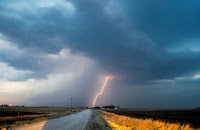Calvary

The inability of men to recognize Jesus as the Son of God until after his crucifixion is a key theme of Mark , and the first man who identified him as such was the Roman centurion on duty during his execution. The self-identification of Jesus as the “ Son of Man ” who suffers for his people made him repugnant to unregenerate men and unrecognizable to Israel (“ His own received him not ”).


















